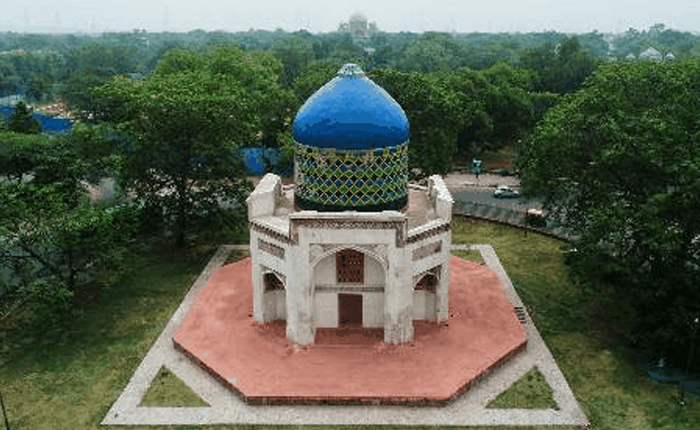For every country its heritage is its pride. And India’s heritage is definitely one of the richest in the world. So it’s the responsibility of every citizen of the country to be more thoughtful towards their heritage. We’ve always thought of future generations when it comes to being socially responsible. We realise the need to preserve our heritage and pass it on to the future generations in the best possible condition.
In 2017, the Ministry of Corporate Affairs, Government of India permitted the use of CSR funds for conservation of heritage buildings. With an objective to provide meaningful experience to estimated 2 million annual visitors, embarked on the construction of a 10,000 sq. m site museum with Aga Khan Foundation in India. This collaboration apart from offering cultural and heritage enrichment has enhanced the opportunities for earning livelihood and improving quality of life of various skilled/ semi-skilled craftsmen employed in conservation of Sabz Burj as well as skilled and unskilled labour deployed in construction of the HTIC(Humayun Tomb Interpretation Centre). The conservation effort is coupled with the creation of a 404686 sq. m new city park and a comprehensive socio-economic programme aimed at improving the quality of life for the 20,000 residents of Hazrat Nizamuddin Basti.
With almost 80% of conservation funds being utilised for employment of craftsmen and procurement of local material such as lime mortar and stone, conservation was seen to fulfil many government objectives and also to create a sustainable economic resource. In keeping with the innovations of approach with an emphasis on traditional crafts based approach to conservation, the ASI’s (Archaeological Survey of India) new policy ‘acknowledges the adoption of contemporary approaches to conservation, management and protection of monuments and archaeological sites, and proposes various principles of interventions within and around them’ specially designed for the Indian context. Due to the extensive restoration process, sandstone lattice screens (Jaalis) have been restored at the arched doorways where unsightly iron frames had been installed. Rare gold and lapis lazuli paintings and incised plaster patterns on the ceiling are also now visible after a rigorous cleaning process, conducted under the supervision of experts.




Havells support for the conservation of 15th century Sabz Burj is the first instance of a national monument conserved with CSR intervention. Completion of conservation works at Sabz Burj on dated 17th Nov. 2021 & HTIC have been marked by Havells and also, providing for illumination of the monument, thus defining the skyline for an important heritage zone. We are currently one of the few players in the market who are specialising in museum light.
